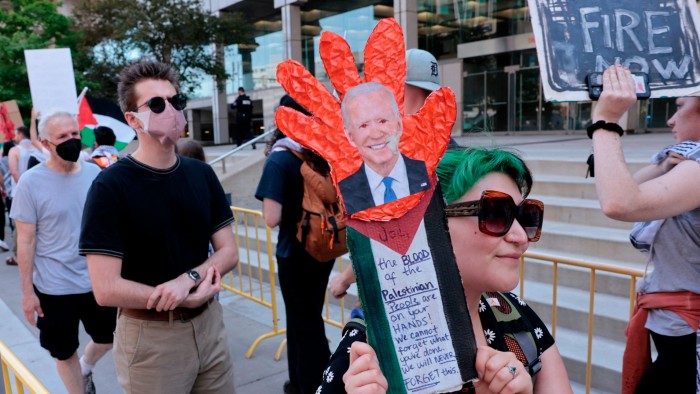The re-election of Donald Trump as President shocked many within the Democrat camp, with this surprise sparking an ongoing period of intense reaction. Furthermore, recent reports highlight the depth of this anger, showing it’s not limited to outspoken Democrat representatives like Texas’ Rep. Jasmine Crockett. According to Axios, more centrist Democrats are also encountering increasingly strident demands from their supporters and constituents during public engagements and personal meetings, advocating for more aggressive political strategies.
Comments from one Democratic representative, one of nine interviewed for the Axios report, shed light on this rising tide of dissatisfaction: ‘Our own supporters are clearly dissatisfied with our efforts.’ Some Democratic supporters allegedly believe that extreme measures such as risking injury during protests at U.S. Immigration and Customs Enforcement (ICE) facilities may be necessary to capture media and public attention.
Another representative reported constituents expressing the view that traditional avenues of civil discourse are no longer viable. These constituents argue that the protection of democracy may necessitate preparing for turbulent times, even to the extent of resorting to violence. One further representative likened the current political climate to the spectacle of the Roman Coliseum, indicating that the public sentiment leans heavily towards these aggressive strategies.
This, it seems, points to the emergence of a faction within the Democrats that is ready to step beyond using democratic methods or peaceful protest as a means to address their grievances. This segment appears willing to bring physical combat into the political arena. There is evidence that this is not an idle threat: recent violent incidents in Texas demonstrate that some are already acting upon these views.
In a case that saw an armed group with connections to Democrat-adjacent ideologies launch an ‘orchestrated attack’ on the ICE Prairieland Detention Center in Alvarado, Texas, on Independence Day. Legal documents reveal that at about 10:30 p.m., a group of 10-12 individuals identified with antifa radicals attacked the building using fireworks, with some individuals damaging nearby vehicles.
The unarmed ICE officers at the scene made a timely 911 call, bringing an Alvarado Police Department officer to the scene. Almost immediately upon arrival, the officer was fired upon from a hidden position in the woods, receiving a gunshot wound in the neck, as per the court document. Another shooter targeted the Department of Homeland Security correctional officers who were unarmed, with between 20 and 30 rounds fired at the officers.
The authorities later discovered two AR-15-style rifles and spent shell casings nearby in the woods. As the attackers fled, police arrested them; some were hiding in the woods while others were attempting to flee down a nearby road. Among the arrested were seven individuals, notably found wearing black, military-grade clothing, some even had body armor and were armed. The attacked officer survived the incident, and charges of attempted murder were filed against ten individuals.
This incident demonstrates the extreme end of protests against the Trump administration’s immigration policies. However, other recent cases of extreme radicalization carry troubling implications. One example is Elias Rodriguez, a left-leaning ‘Free Palestine’ extremist, who is charged with the murder of two Israeli Embassy personnel at the Jewish National Museum in Washington in May.
Another notable instance features Luigi Mangione, accused of killing United Healthcare CEO Brian Thompson in New York City. Despite the brutality of his act, he found admirers in certain leftist circles — there, his crime was either downplayed or justified as a defiant stand against a perceived burdensome healthcare system.
Alongside these instances, there have been widespread riots and protests, some involving Democrat lawmakers or solidarity groups like labor unions, causing various levels of disturbance. This wave of dissent appears alongside a precipitous decline in the number of Democrats identifying themselves as proud Americans, a fact amplified against the backdrop of recent political events.
Gallup data from 2015 reveals that 80% of registered Democrats reported being very or extremely proud to be American during Obama’s term. Now, with Trump as the President, that figure has dropped dramatically to only 36%. CNN data analyst Harry Enten comments on this sharp decrease in nationalist sentiment among Democrats, drawing attention to the contrast with stable sentiment among Republicans: 90% in 2015 and 92% currently.
Compiling these various strands, a clear picture emerges: a subset of Democrats are appealing to their elected representatives to adopt violent measures against President Trump’s policies. Meanwhile, groups that can be seen as radical extensions of the progressive Democrat movement engage in violent acts to hinder the President’s enforcement of federal immigration laws. These radical elements have even committed politically motivated murders, actions eerily frequently endorsed or excused within extreme leftist circles.
All of this occurs under the ominous headlines of a significant drop within one of the two major political parties in the expression of a foundational civic sentiment — national pride. The combination paints a disconcerting picture, and there’s little indication of any chance for significant improvement in the near future.

